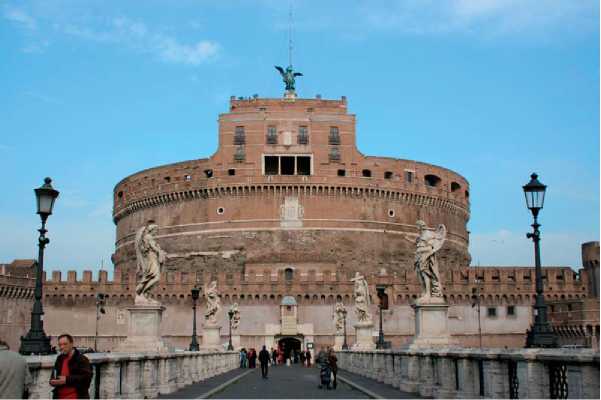Some Specificities of Rome
The archaeology of Rome is a paradigm for urban archaeology, with all the specificities that this peculiar situation involves. As a matter of fact, the city has continuously been settled from the proto-historic period and cyclically prominent on the Italian and Mediterranean scales. The evolution of the urbs, ‘the City’, as the ancient Romans used to call themselves, has been complicated by its status of capital of the Empire, to which Rome has given its own name, and by its history: the knowledge of ancient Rome has become a major issue at stake in the legitimacy of power, enhanced by the rule of the Christian Church and by the final choice to turn the city into the capital of united Italy at the end of the nineteenth century. Thus, ancient Rome has constantly been considered as a pattern for other periods, should it be the Renaissance or Mussolini’s time, highlighting in turn the glorious remains of the lost power or, on the contrary, re-using the antique wealth, in order to compete with it. As a matter of fact, the surface intra muros (century 40000 m2.) and the population of Rome at the first century BC (c. 1 million inhabitants) have never been reached again before the twentieth century.
Each and every period would deserve to be taken into consideration. Further, study of any one of them (e. g., Rome throughout pagan Antiquity - the subject of the present article), necessarily needs an intellectual reconstruction: the remaining untouched evidences are intricately linked to their reused corollaries, on occasion re-employed or functionalized for other purposes (e. g., a pagan temple turned into a Christian church, a sarcophagus into a fountain etc) (Figure 1). Besides, the increase of the city’s level, of c. 20 m at the most from the sixth century BC to nowadays, gives an idea of the stratigraphic complexity in the different areas: some of the hugest public buildings have been used as foundations for medieval and Renaissance constructions, and partly remain in the

Figure 1 An example of reuse: the mausoleum of Hadrian turned into the fortified Castel Sant’Angelo.
Cellars of houses (such as the theatre of Pompey or of the stadium of Domitian, under the Piazza Navona). Moreover, the different areas of the city have not evolved the same way, some monuments having been completely destroyed, others reused, removed, preserved, or even rebuilt - for practical as much as ideological reasons.
Rome throughout History
Urban archaeology applied to the case of Rome raises different methodological issues: besides the scattering of material evidences, for the above-mentioned urban purposes, but also with the growing taste for collections of ‘antiquities’ as early as the Renaissance, it is often tricky to categorize most of the monuments, considering their use even during Antiquity. As a matter of fact, ancient Romans themselves liked to gather works of art in public or private collections, and, on occasion of restorations due to obsolescence or fire, to transform, adapt, modernize, or personalize all kinds of monument, always used as ideological symbols - in a culture in which the limits between public and private spheres were definitely different from ours. In that context, one specific monument should be studied in consideration of its foundation, but also its different phases of monumentalization, throughout Antiquity and beyond.
It ensues from this that a chronological overview is as problematic as a topographical one. Here we have been chosen to organize the presentation of the main archaeological remains of Rome, unlike most of the archaeological guides, in four chronological phases: the time of the ‘foundation’, the Republic, the Augustan period, and the Empire, subdivided into thematic focuses. This intends to underline the specificity for each period of a long history, from the eighth-century BC to the fourth-century AD, and to emphasize the situation of archaeology in the historical research.
Multidisciplinary Evidences: Imaging the City
It implies that each chronological panorama is an intellectual reconstruction, based not only on the archaeological remains ideally replaced in their contexts of uses, but also, on a variety of literary, epigraph-ic and iconographic evidences. This feature is another specificity of Rome: on the one hand, there is a rather important number of preserved monuments, and on the other hand, we know through written documents the name, the function, the history, and the approximate localization of most of the ancient buildings - so that the research field is immense, and the temptation to associate the one to the other great. This is also methodologically dangerous, when the coincidence cannot be rigorously demonstrated. Most of the time, archaeological reality is much more ‘normal’ than the textual one, which is inclined to highlight the exceptions, for artistic, ideological, or sociologic reasons.
Consequently, present scholars intend to connect the lacunary elements in time and space, thanks to a multidiciplinary approach in order to base building identifications upon more precise archaeological information. Systems of computer modeling and virtual reconstructions have recently permitted to provide impressive three-dimensional graphical, digital, and interactive restitutions of the buildings. In the end, ongoing studies tend to focus on private constructions, while a new field of research looks at ‘non-noble’ or ‘non-tilite’ constructions like suburban habitations, shops, or basic infrastructures of the city, such as water supply, which clearly demonstrate that Ancient
Rome was not exclusively a ‘city of temples and squares, emperors, horses and houses’.
Main Steps of Roman excavations
The heterogeneity of evidences to be connected to archaeological findings is one part of the puzzle of Rome; another concerns the modern attitude toward the antique remains. As a matter of fact, for the reasons mentioned above, a search for the past has always existed - unlike most of ancient cities, such as Athens: the quest whether it should be linked to the cult of the first Christian saints and the trade of martyr’s relics, or to the fascination for the politic and artistic antiquity at the Renaissance, has destroyed and isolated from their context a number of monuments. Paradoxically, the most important damages have been done when the interest for antiquity was at the highest point: in the sixteenth century, the area of the forum and the Palatine Hill, rather well preserved because of its abandonment into pasture and aristocratic gardens, was systematically excavated and properly looted from the sculptures and precious materials, essentially marbles, that were found; this can be partially reconstructed, thanks to drawings of contemporaneous artists and architects, such as Pirro Ligorio, but no scientific documentation was carried out at the time. The same process of discovering (led by philological interests above all), imitation and, in the end, spoilation, can be observed at the Neronian domus aurea, at the origin of the taste for the grotesques, and the villa Hadriana at Tivoli, in the Roman suburb.
The destruction of archaeological levels and the removal of antiquities was stemmed when archaeology was to become a scientific discipline, thanks to Winckelmann’s conceptions on Art History, in the nineteenth century at the same time, archaeological remains became the stake of a competition between the Vatican, the aristocratic Roman families, the foreign states (particularly Germany and France) and the new Italian state. After 1870, most of the archaeological areas, defined as such, were bought by the state, scientifically excavated by archaeologists such as Ranucio Lanciani or Giacomo Boni, highlighted and exhibited to the public. But this does not imply that they were absolutely preserved, faced with the big works of the new capital, or, in the 1930s, of the Mussolinian State, whose leaders intended to inscribe themselves in the continuation of their famous predecessors, with the construction of the monument to Vittorio Emmanuele II between the Capitol and the forum, or the via dei fori imperiali (‘street of the imperial forums’), leading across the different forums - and destroying part of them.
From the revival of the excavations after World War II up to nowadays, with the digging of the third line of the metropolitan underground line, started in 2006, the scientific scopes of archaeology are better defined, controlled, and distributed by the Soprinten-denza to the different partners - Italian and foreign, public and academic. But this still implies necessary choices, depending on the patrimonial strategies, in excavating, preserving, presenting, and emphasizing the archaeological findings. Since excavations are a destructive method, to reach one peculiar historical level means to destroy the levels above, even if they are more impressive. Even if modern methods intend to document them with the best accuracy, objectivity, and exhaustiveness, the ongoing attitude tends to preserve most of the construction, and to work on very limited surveys, or to benefit from public works that drill the underground of Rome. So that we know definitely better the archaeology of the latest antique periods than the earliest; but the quest for the entire Roman past is still in constant progress, thanks to the evolution of modern archaeology.




 World History
World History









